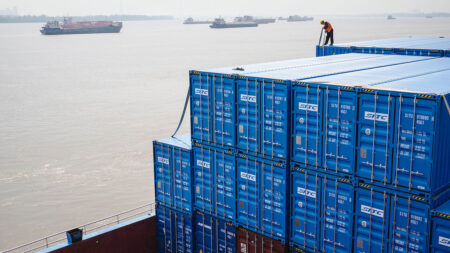In the context of international relations, the Cold War between the United States and the Soviet Union was characterized by a complex web of confrontations, utilizing various strategies that often involved third-party nations. The overarching theme of this conflict was that the superpowers sought to undermine each other’s influence globally without engaging in direct military confrontations. This meticulous balance of power shaped global politics from the late 1940s until the early 1990s and involved a series of proxy wars that spanned multiple continents. In an evolving geopolitical landscape, parallels can be drawn between the historical dynamics of the Cold War and the contemporary trade tensions between the United States and China.
Fast forward to the present, the economic rivalry between the United States and China can be perceived as a modern-day trade war reminiscent of the tactics used during the Cold War era. Following extensive discussions held in diplomatic venues such as Geneva and London, both nations initially took a more conciliatory approach, easing the aggressive imposition of tariffs that had characterized their economic exchanges. This shift in tone was welcomed by the global community, as tariffs had begun to have detrimental effects on various industries and consumer prices. Nevertheless, the underlying tensions remain palpable, as both countries continue to seek dominance in international trade and technological advancements.
The current trade war, unlike the traditional kinetic conflicts of the 20th century, operates on a different battleground. Instead of openly clashing through increases in tariffs and direct economic confrontations, the United States has opted for a strategy that involves leveraging the economic vulnerabilities of third countries. This indirect form of warfare can often lead to unforeseen consequences, affecting nations that are neither the instigators of the conflict nor the primary targets. Just as the Cold War saw smaller nations caught in the crossfire of superpower ambitions, the current showdown between the U.S. and China places various states in precarious positions within the global supply chain.
Countries such as Vietnam, Indonesia, and India, among others, are becoming increasingly significant as they are turning into alternative hubs for manufacturing and trade, often considered as potential beneficiaries of the trade war. As American companies seek to mitigate exposure to Chinese tariffs, there has been a surge in investment directed toward these nations, leading to shifts in production and supply capabilities. While this may provide short-term economic benefits to these countries, there is an overarching uncertainty regarding the long-term implications of becoming collateral in a protracted trade conflict.
Moreover, the impact of this indirect trade war can ripple throughout global markets, affecting everything from agricultural exports to technology sales. Economies that were initially stable can find themselves vulnerable to the fallout from decisions made in Washington or Beijing. As different nations navigate their relationships with these two superpowers, there arises a complex interplay of alliances, strategies, and economic dependency that mirrors the intricate dynamics observed during the Cold War.
In conclusion, the United States’ trade war with China replicates some of the indirect confrontational strategies employed during the Cold War, utilizing third countries as proxies in an evolving economic battlefield. While these diplomatic talks in cities like Geneva and London signify a temporary easing of tensions, the underlying competition for economic supremacy continues to shape the international landscape. As countries like Vietnam, India, and others find themselves at the nexus of this conflict, they must tread carefully in aligning their interests, all the while bearing the potential consequences of being drawn into a struggle far beyond their borders. The transformation of global trade dynamics during this modern period serves as a reminder of the intricate chess game that characterizes superpower rivalry, where the effects can be felt far and wide, influencing the fates of nations in unforeseen ways.









